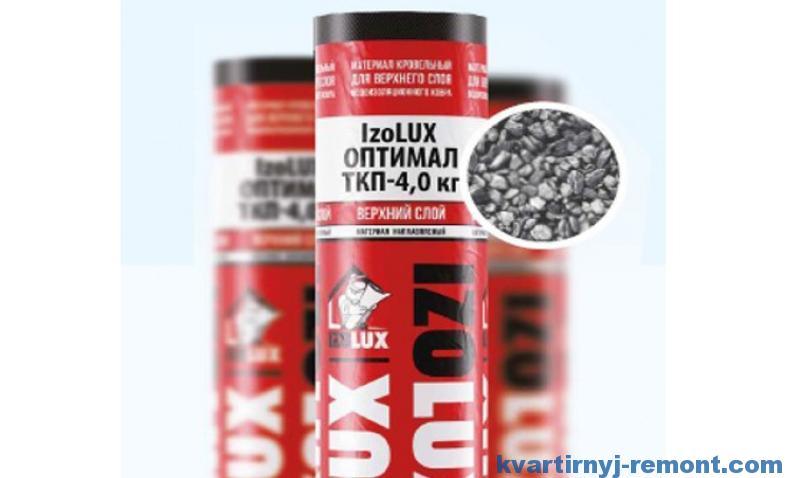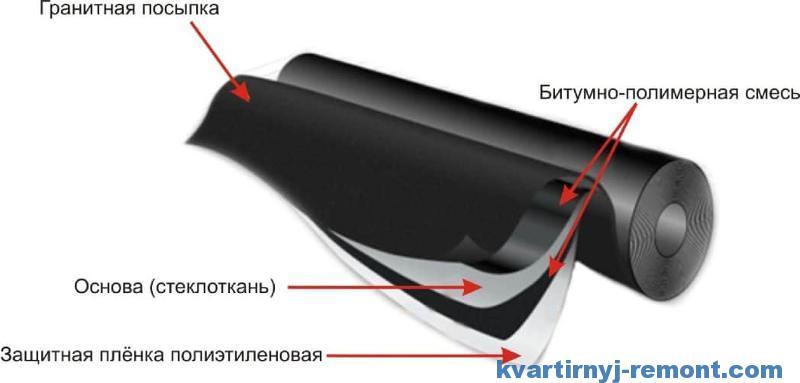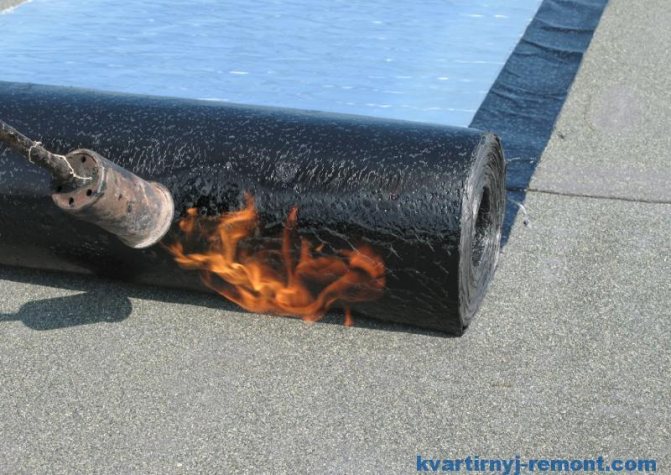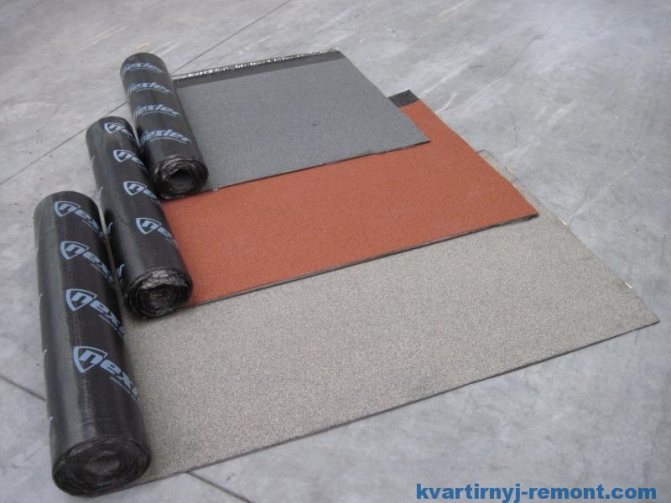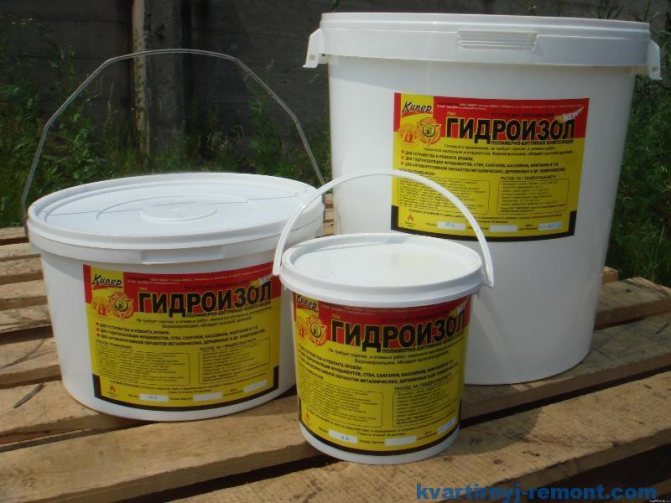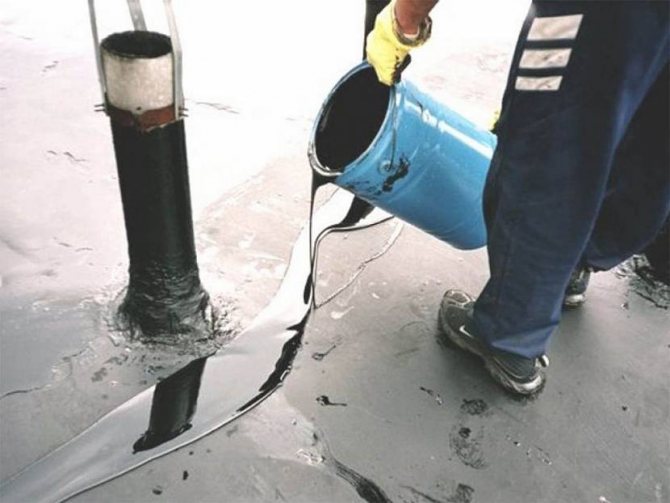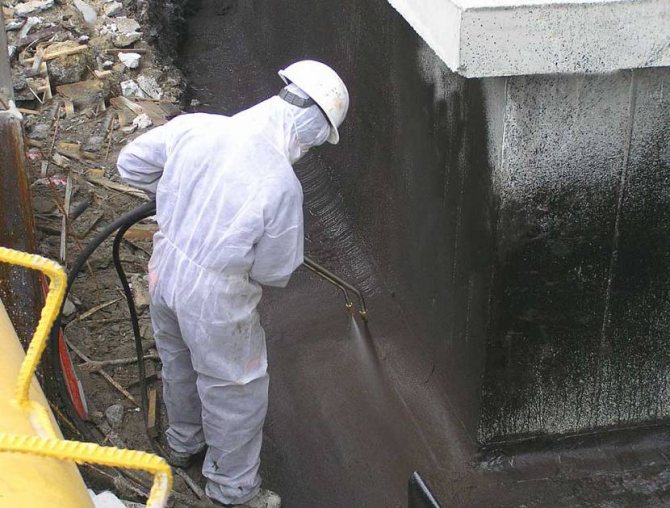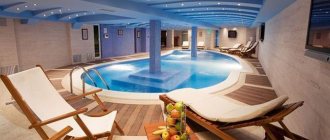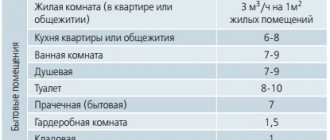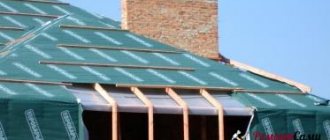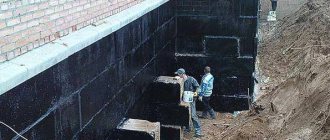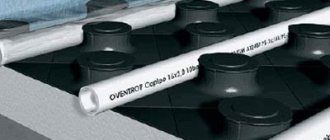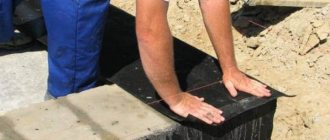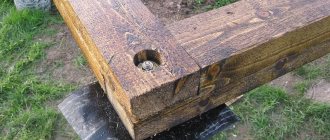Technical characteristics of hydrostekloizol
This material has good insulating properties. Gidrostekloizol consists of a fabric impregnated with oil bitumen and additional granite substances. High quality fiberglass material is able to withstand various atmospheric conditions and aggressive environments. It is used to seal pipes, ventilation, roofs, drainage systems, as well as water pipes. Pipes are most often insulated with Thermaflex or Vilatherm, these are specially created materials for thermal insulation. Gidrostekloizol is made of two layers, which are lubricated with bitumen. Due to its high-tech composition, it has an elastic structure that is resistant to various temperature extremes. In addition to roofing roofs and pipelines, the material is used to insulate large structures such as overpasses, subways and bridges. Like all materials, hydrostekloizol has a number of modifications, which are designated by brands. According to the standard, it is produced in the form of rolls, it is 1m wide and 10m long. The brands differ in the way the material is made.
Among them are main series:
- HPP - the bottom layer consists of fiberglass
- HKP - the top layer of fiberglass
- CCI - bottom layer of fiberglass
- TKP - fiberglass top layer
- EPP - glass - polyester bottom
- EKP - respectively the top layer of glass - polyester
Their scope is determined depending on the composition. The letter "K" indicates that the material is made of coarse-grained fillings, and "P" indicates that it is equipped with an additional protective polymer film. Coarse-grained materials are used for waterproofing roofs. Fine-grained ones are used as cushioning material. Gidrostekloizol is able to withstand breaking tension up to 60 kg.
What is hydroisol and hydrostekloizol: useful information and labeling
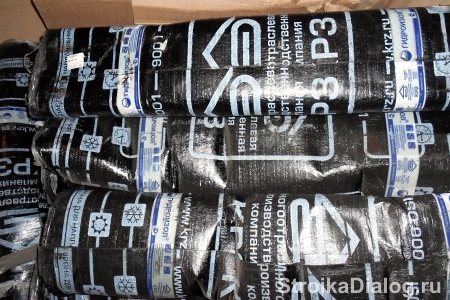
Hydroizol belongs to economical options for roofing and waterproofing material, which are produced in rolls and in liquid form. Roll type of waterproofing is made on the basis of asbestos cardboard.
For hydroglass is used glass cloth or fiberglass, on the surface of which a high-quality bitumen composition is applied. A special polymer film is applied to the inner side. The technology also includes double-sided film application or the presence of a special coarse-grained mineral dressing.
On the building materials market there are several types of hydroisol and hydroglass insol, which differ in the components used in the manufacture of the material and its purpose. Thanks to the accepted marking, the consumer can easily determine on what basis this or that type of waterproofing and its scope of application have been created.
The GI-G mark indicates that the material is waterproofing, the GI-K tells about the purpose of the waterproofing for roofing work. The presence of the letter X in the designation indicates that the material has a fiberglass base, T - a fiberglass base. The presence of the letter P in the marking means that a polymer film was used as a coating, and K indicates the use of mineral dressing.
According to existing standards, manufactured glass-based products are divided into the following brands and are intended for:
| Brand | Application |
| CCI | For laying the lower insulating barriers, including the roofing layer, since it has a bitumen-polymer film applied on both sides of the base sheet. |
| TCH | For the device of the upper roofing layer. |
| EPP | A versatile type of polyester-based material. |
| ECP | Option of waterproofing for top roofing. |
| HPP | Waterproofing material of universal character. |
| HKP | It is used to form the upper insulation layer of the roof. |
Thus, materials with a polymer film are universal and are used as an element in the construction of a waterproofing carpet of flat roofs, their repair, moisture protection of foundations, basements, ceilings, garages. Rolled waterproofing of the HPP, TPP brands is covered on both sides with a protective film, which does not allow it to stick together in a roll during long-term storage.
Products with mineral chips on the upper side of the roll material are a roofing option and have become indispensable for waterproofing flat roofs, their overhaul and maintenance.
Gidrostekloizol "Technonikol"
The Tenonikol Corporation produces various materials that are resistant to all kinds of climatic conditions. At the same time, the most popular material is hydroglass insol. Before purchasing the material, it is necessary to make a diagnosis of the surface quality that is required in the insulation. After that, you should decide on the required properties of glass insulation. It can be protection from UV rays or water. TechnoNIKOL material can be laid even at sub-zero temperatures up to - 15 degrees. C. This material is more economical as the base does not need an additional layer of bitumen. Fiberglass does not rot or crumble. Its service life is over 15 years.
Advantages and disadvantages of hydroisol
The main task of any waterproofing is to create a layer that prevents even the minimum amount of moisture from entering the roof system, while maintaining its own state under various influences (mechanical, climatic and others).
Hydroisol possesses these qualities. Its basis is a fiberglass cloth coated on both sides with bitumen and polymer substances. This makes the material resistant to rotting and decomposition even in very high humidity conditions.
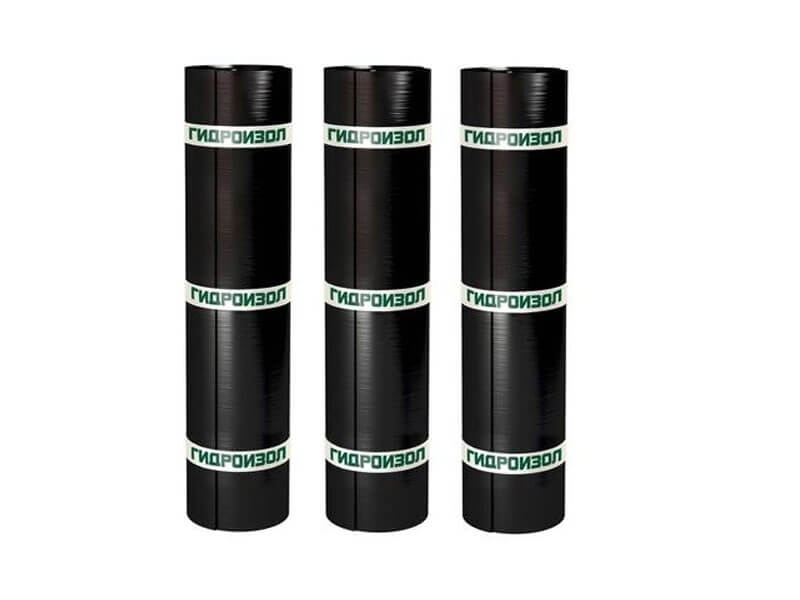

Hydroisol is produced in the form of rolled panels. Installation is carried out by melting the back of the canvas, or by using mastic as an adhesive.
Areas of use, protection of roofs from the ingress of water, as well as a waterproofing material when laying foundations, protecting floors, creating a waterproof layer of tanks and others.
The main advantages of such roll insulation are as follows:
- Elementary installation that does not require large labor costs.
- Long period of operation, and easy maintenance of the coating.
- Absolute waterproofness of the layer.
- Long-term use thanks to durable and resistant materials.
- Hydroisol can be laid on surfaces made up of any building materials: concrete, wood, metal, and others.
The roll cloth has excellent performance characteristics. Due to the fiberglass base, the waterproofing material can withstand significant tensile loads, it is elastic, and the created coating can withstand temperatures up to +85 degrees. In addition, the material has a long period of use (at least 15 years).
Another feature is that for laying you do not need any highly specialized tools and devices, only heating devices such as a gas burner / blowtorch and a building hair dryer are enough.
Laying technology of hydroglass insulation
This material can be mounted using a special bitumen mastic. This cold method is necessary when lining pipes or ventilation.The hot method using a gas burner is used to seal roofs and other structures that are resistant to firepower. In this case, laying is done only with an overlap. Before covering the base with material, it must be ideally cleaned of dirt and previous roofing materials. In order to ensure good adhesion of the material to the base having a concrete or loose surface, it is necessary to use a special primer. It can be purchased separately or prepared by yourself by mixing bitumen with gasoline in proportions 1: 2. The bituminous primer can be applied with a brush, roller or spray. After which it should dry completely. The material is laid out on the base, measured, and the excess is cut off. The cushioning material "P" is heated separately and in a semi-molten state is already applied to the base, and the roofing hydroglass "K" must be warmed up together with the base before laying. At the very end, the seams are checked and sealed.
Laying waterproofing
It is possible to lay the waterproofing on the leveled and prepared surface of the roof in three ways: mechanical, hot, or using mastic. The simplest is the mechanical installation method, which does not provide for additional operations. The roll is simply rolled over the surface. The tape is laid with an overlap of about 14-16 cm. The layout of the material starts from the lower edge of the roof and rises up along one line parallel to the side cut of the roof. This method can be used on a flat roof or roof with a slight slope. After the installation is completed, it is advisable to coat the seams between the strips with mastic, pitch or bitumen.
Hot styling. The hot method of laying the waterproofing layer is more laborious, but provides increased reliability. Work on the implementation of this method is carried out together, since they require simultaneous heating of the tape and its layout. The main essence of hot technology is to heat the bottom bitumen layer, which ensures its adhesion to the primer layer on the roof surface.
With the hot method of laying, the waterproofing will need to be heated with a burner.
The work is carried out in a specific order. Roll placement starts at the bottom edge of the roof. As it unwinds, the inner layer of the waterproofing material is heated using a gas torch or blowtorch. The melted layer of material is pressed against the roofing primer layer. Gradually, by unwinding the roll and heating the tape, the material is laid over the entire roof.
The tape is laid with an overlap of about 9-12 cm. For the manufacture of a roofing covering of increased reliability, a second layer of waterproofing can be applied. In this case, the second layer can be applied according to the described mechanical technology. During the implementation of the hot method, it is necessary to control the heating duration - excessive heating must not be allowed, which can damage the base and the outer layer.
Temperature action should only provide surface melting of the lower bitumen layer. In addition, it should be borne in mind that the waterproofing is a combustible material, and can ignite when exposed to an open flame.
The most costly, but at the same time the most reliable way is to apply a waterproofing tape to the mastic.
This technique can even be used on a pitched roof. The essence of the technology is to apply a layer of mastic to the roof surface, on top of which the waterproofing layer is laid. The work is carried out in the following order: a special ready-made mastic is applied to the roof surface in a strip slightly larger than the width of the roll. The roll, starting from the lower edge of the roof, is laid out over the mastic with a squeeze using a weighted roller. The stripes are superimposed with an overlap of 8-12 cm.The main advantage of this technology is the absence of an open flame.
Application of hydroisol
Unlike roofing material, waterproofing material is suitable for insulating pipelines. In addition to the hero of the article, they contain brizol, heat-shrinkable and polyvinyl chloride tapes. In pipelines, they work mainly with mastic-waterproofing. It perfectly insulates joints in metal structures, avoiding chemical reactions with them.
Waterproofing is also useful in swimming pools. In them, the water must be blocked at two levels. Internal waterproofing protects from groundwater, and external - from those in the bowl. If the pool is indoors, internal protection is also needed, but not as powerful.
With pools, as well as pipelines, they work mainly with mastic. Rolled waterproofing is used for foundations and roofs. They are flat, or with a slight slope. For buildings with sharp drops in roof levels, the hero of the article is not suitable.
Sometimes, waterproofing is put on the floor. This is true in damp rooms. The coating does not allow moisture to enter the room. True, before laying the tiles, you need to make a reinforced screed according to your mind. This is a special case of a reinforced concrete structure. You can also protect the garage, basement.
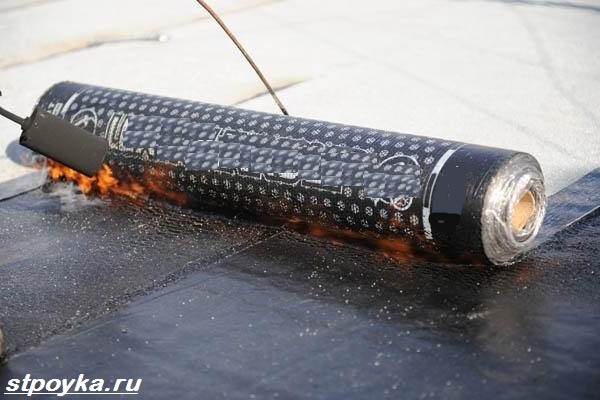

Before using the hero of the article, they are stored in dry, darkened rooms without sudden changes in temperature. Positive indicators are desirable. Heating devices must be at least one meter apart from the rolls.
The adhesion of the rolls to each other is also undesirable. Without special interlayers, "skeins" can stick together. This happens especially often during transportation. The rolls of hydroisol are stored in a vertical position.
Laying of waterproofing is carried out up to -15 degrees Celsius. Lower temperatures lead to cracking of the material when working with it. Once laid, the isolate can withstand up to -40 degrees. The statement concerns hydroisols with polymer additives that increase plasticity and frost resistance.
Video description
The video shows how to repair roofs covered with different roofing materials using liquid waterproofing:
It should be noted that laying waterproofing in the form of a roof topcoat is just part of where it can be used. With its help, flexible shingles are installed, or rather, its underlay carpet, not only along the entire surface of the coating, but also at the junction of the roofing material, on valleys, cornices and ridge.
Mastic is used today in private housing construction as waterproofing of foundations. It is simply applied in two layers using a spray bottle. Similarly, you can waterproof steel or cast iron pipes.


